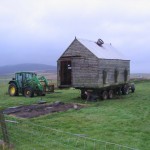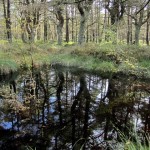![Water Reflections, by Ana Montreal on Flickr. [CC-BY-SA 2.0]](https://wp-media.patheos.com/blogs/sites/311/2015/09/anamontreal_flickr_water_reflections_CC-BY-SA2-300x200.jpg)
We decided that the title Sermons from the Mound no longer quite fitted the type of posts we are actually writing. Technically, a sermon is a reflection on a text, and an exposition of its meaning. That’s not what we are actually doing with our writing.
So we had a very enjoyable brainstorming session via email, with a total of fifty-five different suggestions for names for the blog. But we kept coming back to dowsing imagery, with its connotations of looking for hidden currents, connections with the unseen, hidden waters, and hidden patterns.
We also liked the fact that divining is another name for dowsing, so there is a pleasing symmetry in the name Dowsing for Divinity. The divine, if we choose to listen for it, to feel for its presence, is hidden just below the surface of things, in the woods and the waters and the rocks and trees, hidden in plain sight in the land itself.
As W B Yeats wrote:
Once every people in the world believed that trees were divine, and could take a human or grotesque shape and dance among the shadows; and that deer, and ravens and foxes, and wolves and bears, and clouds and pools, almost all things under the sun and moon, and the sun and moon, were not less divine and changeable. They saw in the rainbow the still-bent bow of a god thrown down in his negligence; they heard in the thunder the sound of his beaten water jar, or the tumult of his chariot wheels; and when a sudden flight of wild ducks, or of crows, passed over their heads, they thought they were gazing at the dead hastening to their rest….
I love this quote, and it was for me the starting-point in the creative process of finding a new name for the blog.
— Yvonne Aburrow
When the three of us started brainstorming a new name together, once someone tossed out the word “dowsing,” we kept circling back to it. Dowsing is a form of divination sometimes known as “water witching” because it’s often been used to find ground water (though it can also be employed to find metal, lost objects, gravesites, and more). To dowse, the diviner holds a forked stick with one end in each of their hands, and then follows the motion of the third end to find what they’re seeking.
I love dowsing as an image for the kind of theological exploration we do on this blog. Dowsing is an intuitive, physical activity that requires a receptive state of mind. Of course, we bring our education and analytical skills to our writing—these intellectual resources provide essential structure for our theology and practice. But the heart of what we’re creating here is experiential, not intellectual: it reaches for a place that is beyond words, but as close as our own flesh. Through writing and thinking and living and being, we are seeking: Divinity? Mystery? Our Selves? Perhaps all of those and more.
Dowsing also appeals to me as a metaphor because of the close relationship between spirit and water in many cultures. Water is used for blessings and baptisms; it can be found in healing baths and holy wells; it makes up 60% or more of our bodies, and it is essential for life. To me, dowsing for hidden water is a perfect image for spiritual seeking.
— Christine Hoff Kraemer
Pick up the forked stick and move by feel and feeling, towards the secret source, the spring and springing. Suss out sympathetic resonances, wait for the dip, the tug and pull. Close the eyes and trust that there is water, that you will find it. Dare to step forward.
To dowse is to listen. To dowse is to walk, aware.
In this space, we do theology by gut, by feel, listening under the surfaces of events and words, making our way through the terrains of intuition, experience and reflection.
Reflection…another water word. Pointing us back to the original mirror, the calm pool, surface in which to see and seek.
Welcome.
–Sarah Sadie
















